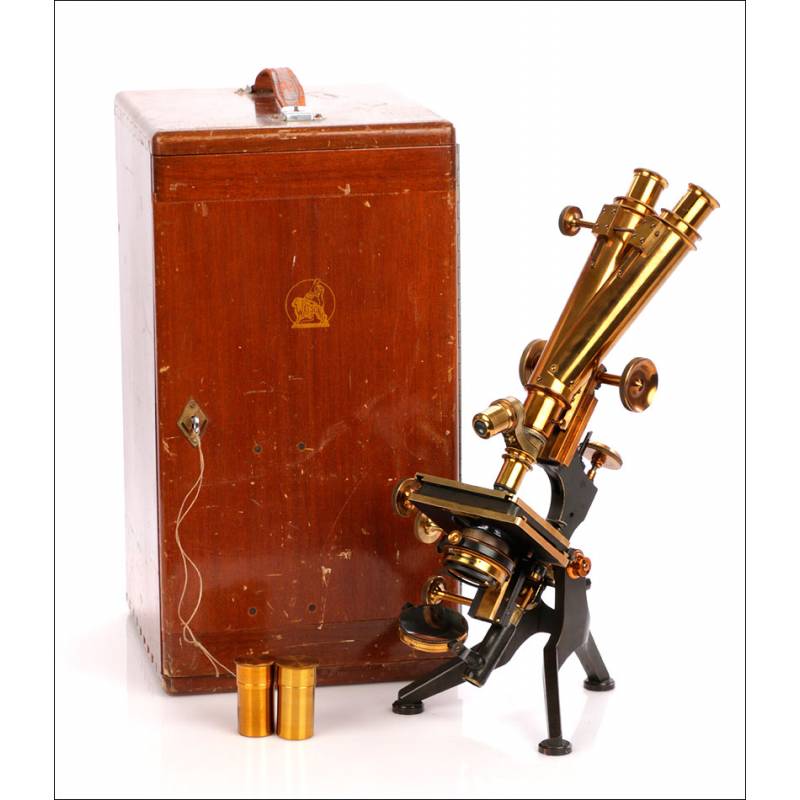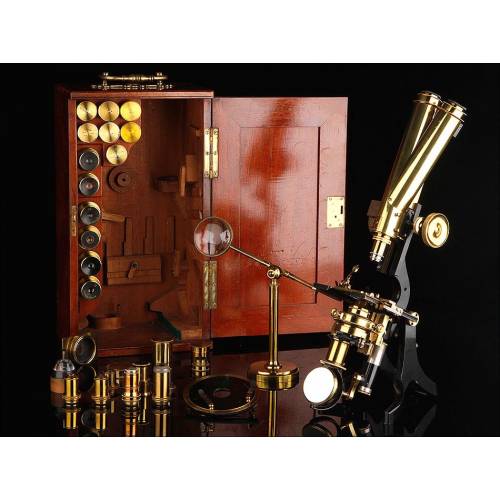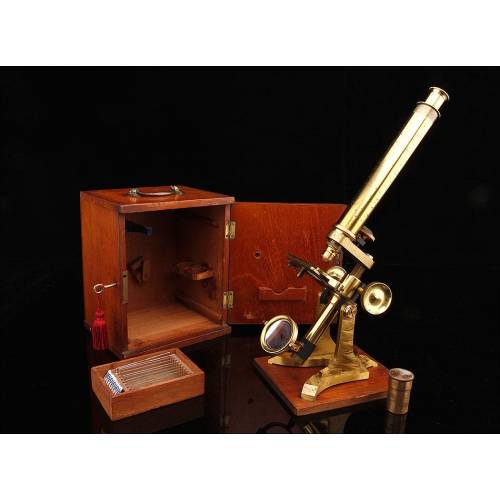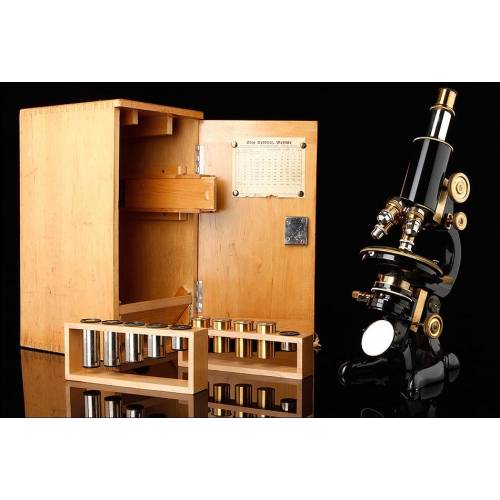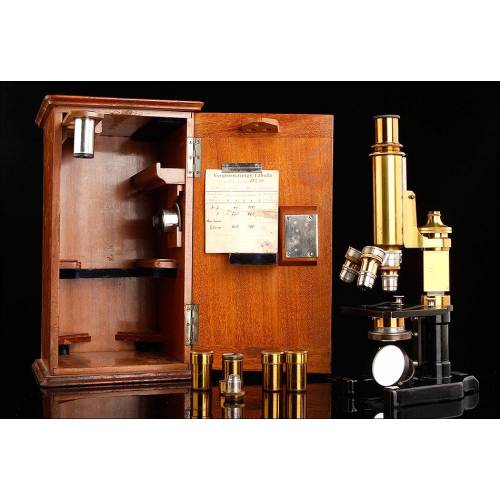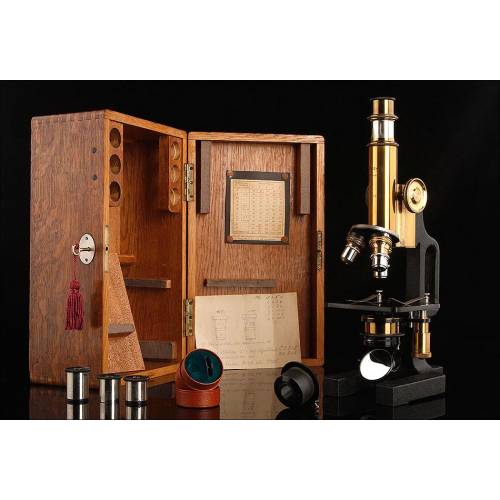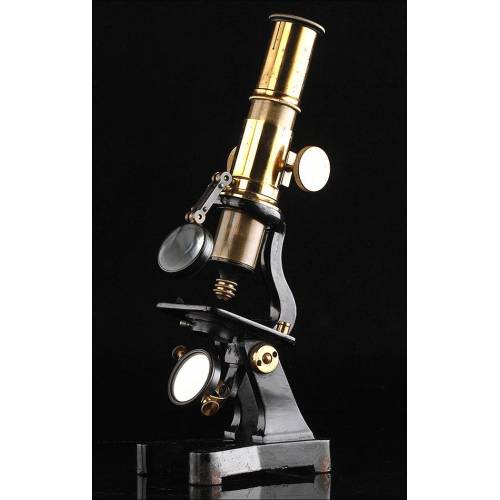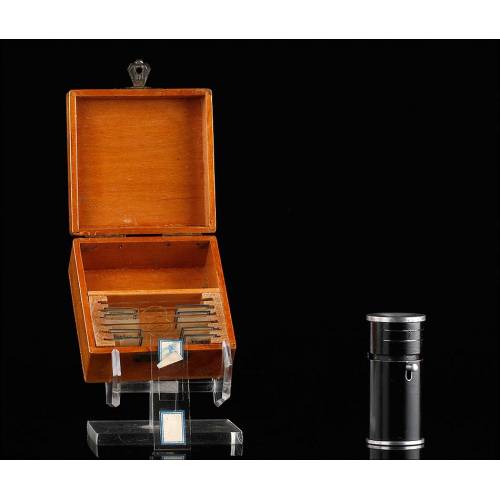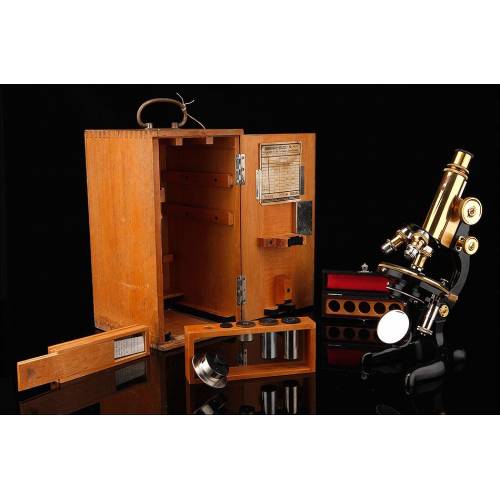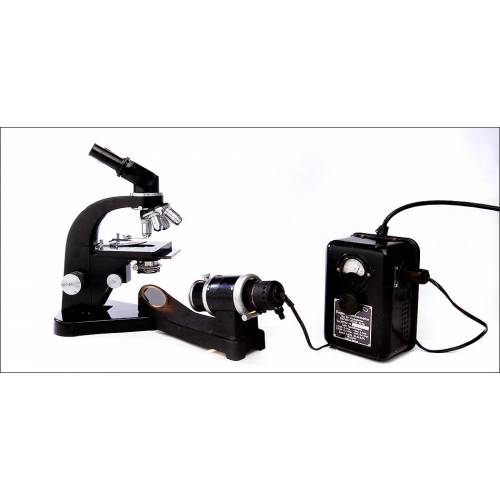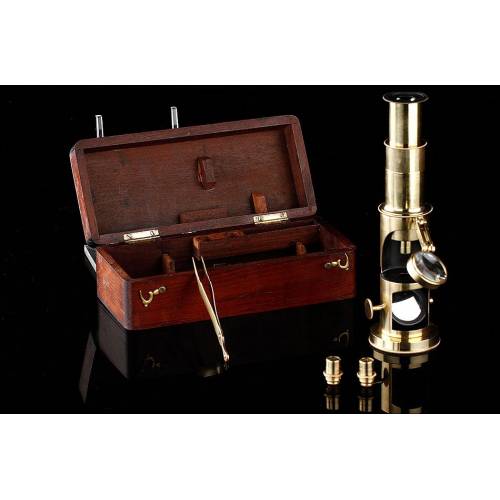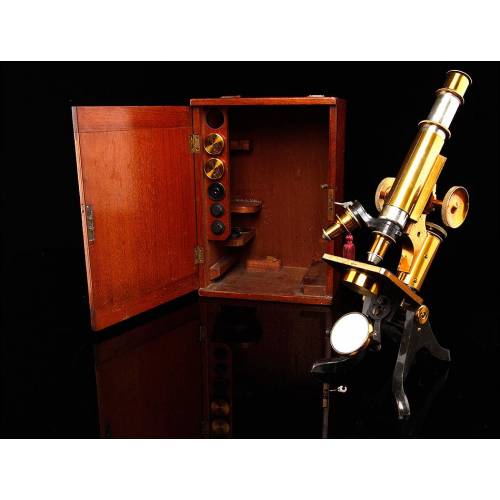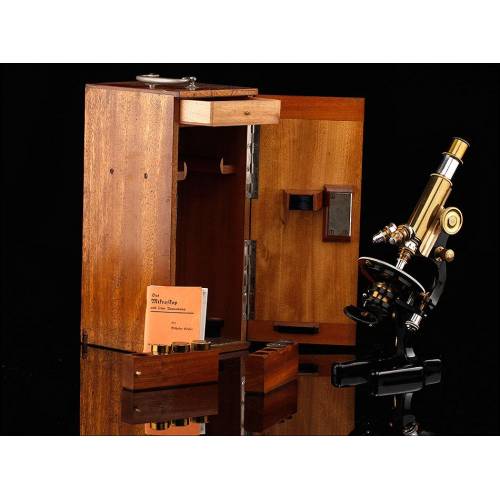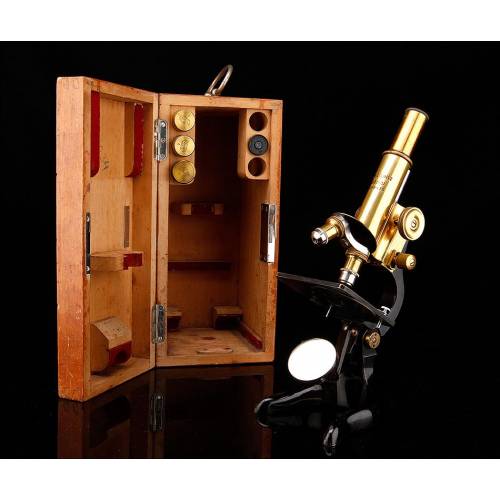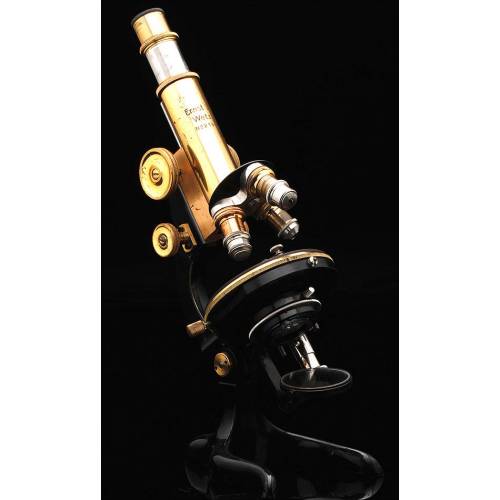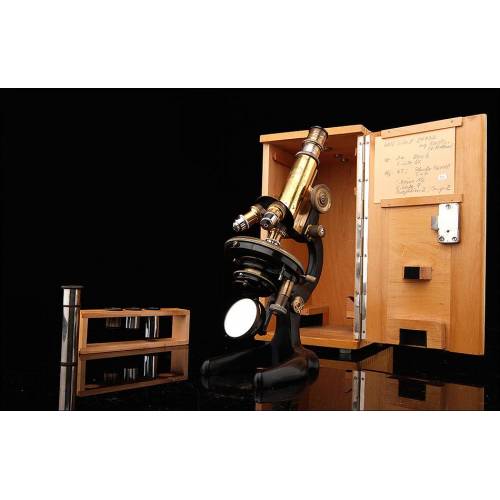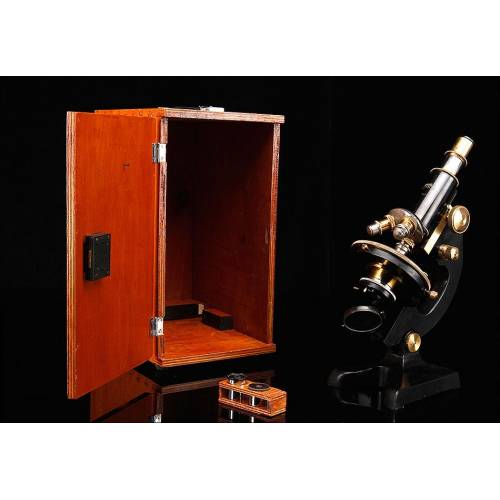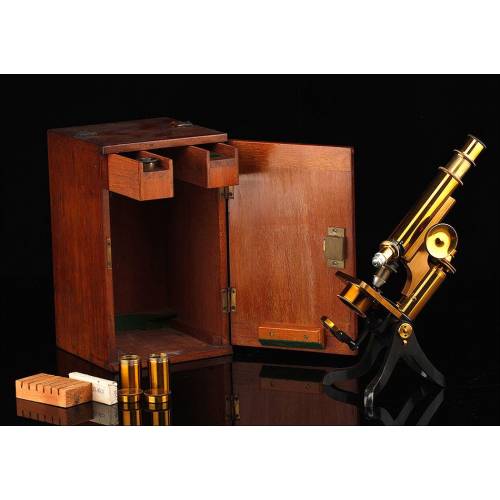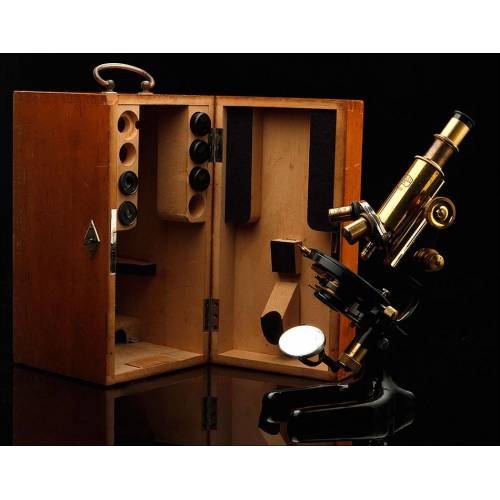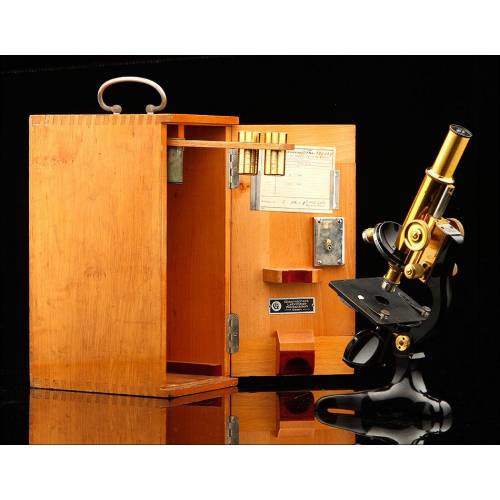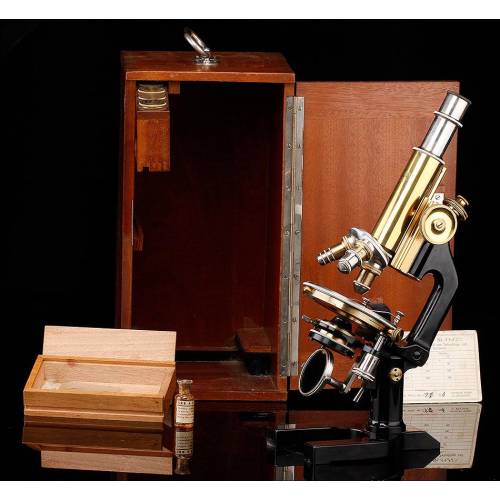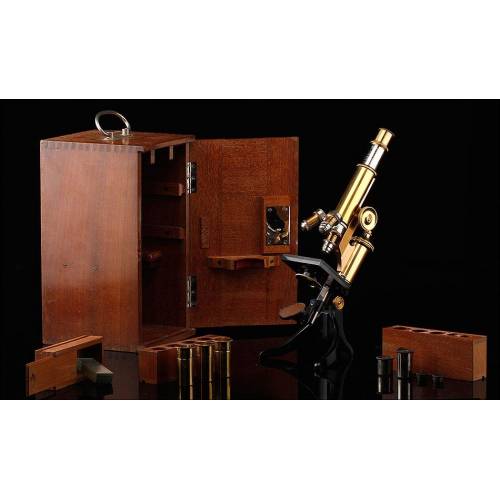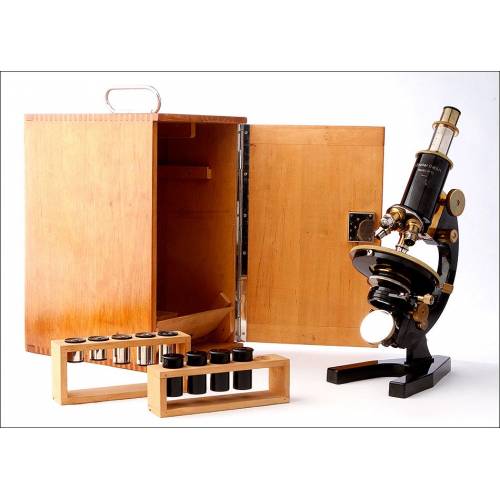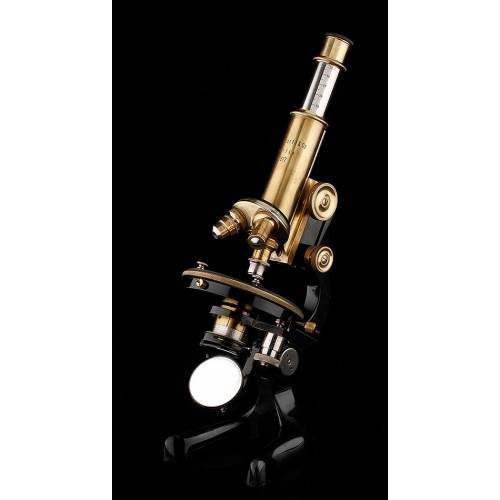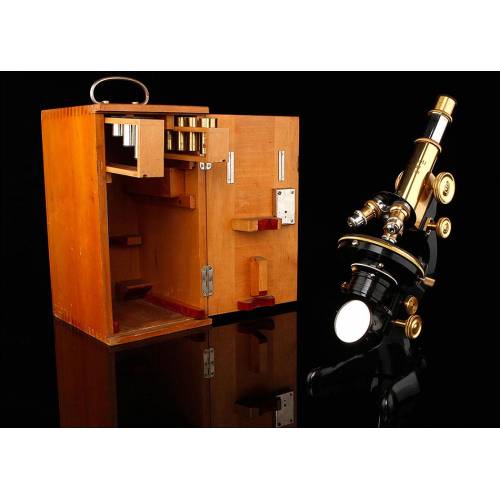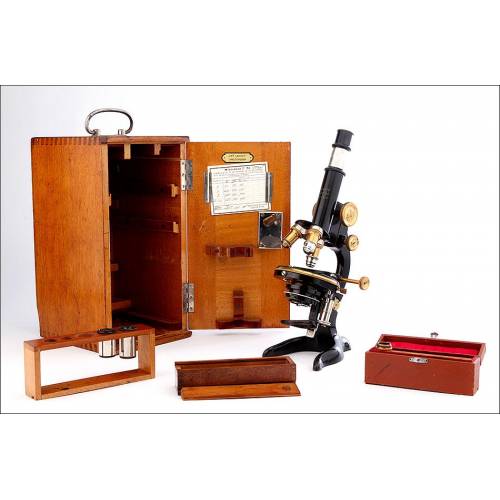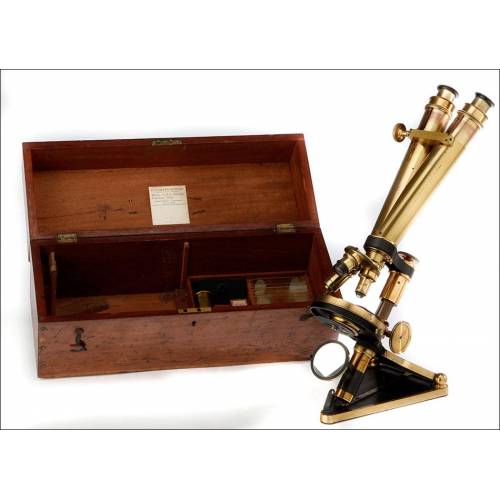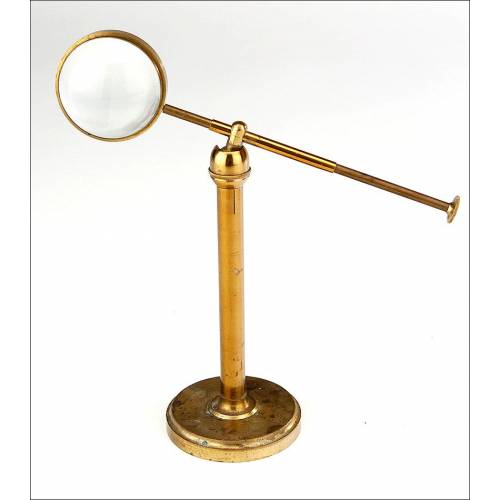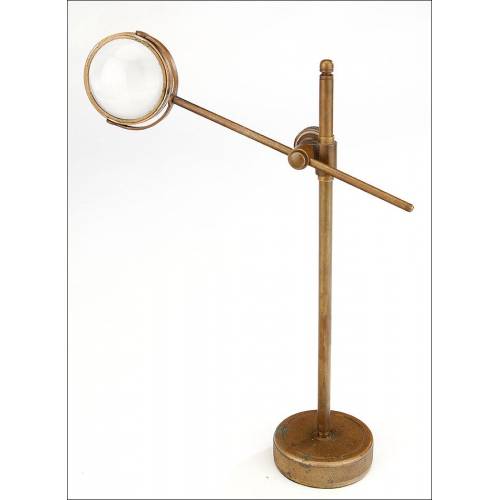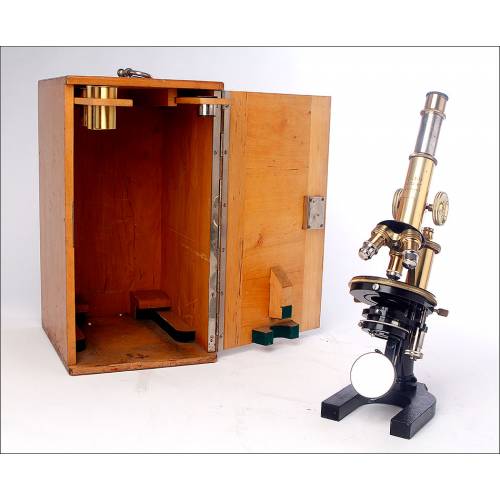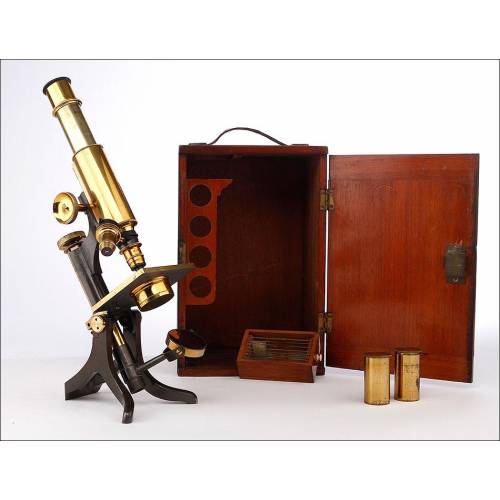C-516
Antique Watson & Sons Binocular Microscope. England, Circa 1910
Wonderful antique Watson & Sons binocular microscope, nearly a century old. Extremely sharp vision. Perfect lacquer.
Sold!
Striking antique binocular microscope signed by Watson & Sons, coming from England and dated circa 1910. This item is quite remarkable for its complexity, beautiful design and amazing condition. The mechanical sample plate, the prism and the lenses are wonderfully preserved, so the microscope provides an impeccable operation. The vision provided by both lenses is extremely clear and sharp and enables the user to watch the samples getting the most accurate images. The two turrets and the microscopes mobile component parts move smoothly and fluidly and are made of brass. They all preserve the original transparent protecting lacquered finish; the finish is perfectly preserved and provides the metal with a deep and attractive patina. The rest of the microscopes component parts, including the three-legged foot, are made of black-painted cast iron with a matt finish. The black finish is slightly worn in some places, something logical if we consider the devices ancient age and use. The microscope comes with two Watson & Sons lenses and a mechanical sample plate for the micrometrical adjustment of the samples. The Wenham prism is in great condition too. The storing case was made some years later (it is dated in the 1940s) but is ideal to store and preserve the microscope in optimal condition. It is made of solid mahogany wood and keeps the original lock and key in working order. For its great performance and fine design, this antique Watson & Sons binocular microscope is an item worthy of inclusion in the best scientific collection. Measurements: Height (Medium Position): 17.32 in / 44 cm.History of W. Watson & Sons W. Watson & Sons was a British optic material manufacturing company which was active for more than one hundred years (from 1837 to 1948). In 1838 William Watson established in London as an optic material manufacturer. Around 1840 the company started to make lanterns, slides and associated equipment. In 1868 the business changed its name and became W. Watson & Son, after Watsons son entered the firm. That year the company moved to 313 High Holborn, where it stayed until the 1940s. In the 1870s they started making photographic equipment and became one of the countrys leading manufacturers. In 1881 William Watson died. In the 1890s the business grew and opened new factories to make instruments, optical glass and cabinets. In 1908 the company changed its name for W. Watson & Sons. The business dissolved in 1948.

